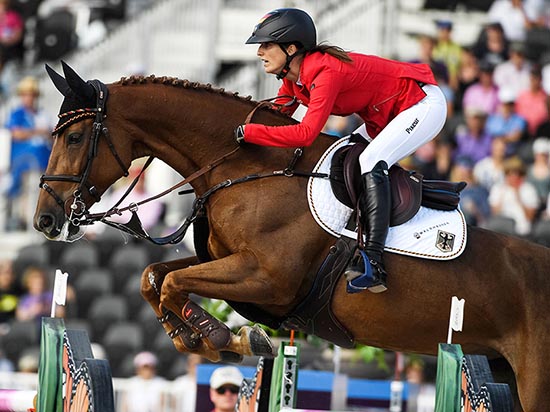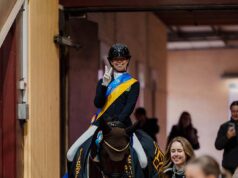
By Gemma Alexander
Graphics: Gemma Alexander
Reading through the archives of The Horse Magazine (Australia) is one of my favourite pastimes, and I recently stumbled upon a particularly interesting article from 2010 entitled ‘Bastards or Bluebloods’ – a performance horse breeder’s dilemma. In the article, French breeding expert Arnaud Evain concludes that the way of the future belongs to ‘bastards’. This article considers Evain’s conclusion since then.
Evain addresses the notion of ‘species’ – a group of individuals who systematically has the ability to reproduce itself. Thus we have the human species, the equine species, the bovine species.... Breeding between individuals from different species is quite common in the vegetable kingdom, but a lot less so in the animal kingdom. It gives birth to hybrids. Hybrids can either reproduce themselves or be sterile as is the case of the mule, a sterile hybrid born from the insemination of a mare (equine species) by a donkey (asinus species).
The notion of race/breed is less precise, and its definition varies according to the author. Most agree that one breed distinguishes, within an animal species, a group of individuals of homogenous type – for instance, the Charolais or Limousine breeds within the bovine species.
Amongst the most ancient horse breeds, we can mention the Arabian horse and the English Thoroughbred. A breed is ‘pure’ after a few generations if it accepts only reproducers (male and female) chosen from within the breed in question.
The product of crossbreeding between two pure races is called a ‘mixed-race’. The mixed-race, contrary to the hybrid, is always fertile. The yellow calf (a cross between Normand and Charolais), the Anglo-Arab (a cross between the English Thoroughbred and the Arabian horse) are ‘mixed-race’ – Jappeloup (1975: Tyrol II [French Trotter] - Venerable xx x Oural xx) is an example of mixed-race.
All others are bastards, they are products of crosses between individuals extracted from populations that have been subjected to several generations of successive crossbreeding. Thus, bastards do not belong to a ‘pure’ race, and are not, like the mixed-race horses, the product of two reproducers from pure races, nor, like the hybrids, the result of a cross between individuals of different species.
Arnaud explained the views of major studbooks at the time on the definition of race: ‘Some very old studbooks are more severe than others as far as admission of male reproducers go, when they come from competing studbooks, they examine the candidates very closely before allowing them in, but none refuse them as a matter of principle. This was the case in Holstein with Cor de la Bryère, and more recently with I Love You, Concorde, Quick Star and Quidam de Revel. Most of the newer studbooks (KWPN, Oldenburg, BWP) made a choice to crossbreed successive generations from the start and claim without qualms their mixed-race. The choice to open up towards other European races was also made by the Selle Français, cautiously since 1989, and more since 1995.’
His findings at the time support the notion that it is the bastards that win in the competition arena: ‘Sixty out of the 100 world’s best horses in international jumping (WBFSH classification, 2010) have a father and a mother from different studbooks. Amongst the six Selle Francais that make our studbook the number one in the world today, we have two with Hanoverian mothers, and one grandson of a SF stallion cross with Trotter (whose mother is the daughter of an Anglo-Arab and a non-recorded mother). And this is without taking into account an average of 20% of Thoroughbred at the fourth generation!’
Which leads to his fairly resolute conclusion: ‘It is obvious: The better the range of colours the painter uses on his palette, the better he will be able to share the range of his emotions. It is the same with horse breeders: The better the choice for the sensible and intuitive breeder, the bigger the chances are for him to produce the horse he had imagined. All the arguments of ‘purity’ of our race of show jumping horses are scientific inanities, and their particular genetic identity is an intellectual swindle.’
All very interesting, which made me wonder if this trend has continued or diminished over the past nine years? Read on....
To begin I looked at the current top 100 jumping horses as listed by the WBFSH from 2009 and 2019. In 2009, 51/100 represented parents that both hailed from the same studbook, and 21 of those were blue blood to the third generation. That left 49 of the 100 to be technically classified as bastards. The most prominent blue blood at the time, who is solidly KWPN bred to the third generation, was Hickstead (Hamlet - Jomara x Ekstein). That said, look a little farther to generation four and we see a Holsteiner and one from the NWP creep in. Still, for all intents and purposes, blue blood...
To read the complete article you need to be a subscriber
CLICK HERE TO SUBSCRIBE TO BREEDING NEWS
SUBSCRIBERS CAN READ THE COMPLETE ARTICLE BY LOGGING IN AND RETURNING TO THIS PAGE



